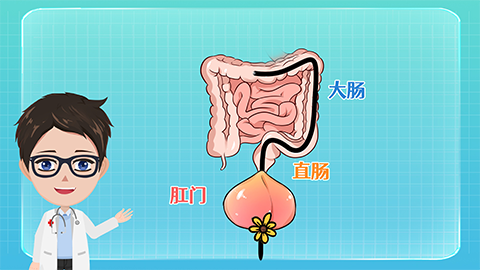肛门口摸到个软软的肉要怎么消除
Generally, a soft fleshy mass felt near the anal opening may be caused by prolonged sitting or standing, poor bowel habits, hemorrhoids, perianal abscess, rectal polyps, or other factors. General treatment and medication may help improve the condition. Prompt medical attention is recommended, and treatment should follow medical advice. Details are as follows:

1. Prolonged Sitting or Standing: Long periods of sitting or standing can lead to poor blood circulation in the anal area, causing prolonged congestion of the venous plexus and forming a soft fleshy lump. Improving lifestyle habits, avoiding prolonged sitting or standing, and increasing physical activity appropriately can help promote blood circulation around the anus.
2. Poor Bowel Habits: Habitual constipation or excessive straining during bowel movements increases abdominal pressure, leading to congestion and swelling of the anal or lower rectal veins, which can result in a soft fleshy lump. Adjusting dietary habits, increasing fiber intake to soften stools, and reducing constipation are important. Additionally, developing a regular bowel habit, avoiding prolonged time on the toilet, and controlling bowel movement duration within a reasonable range are recommended.
3. Hemorrhoids: Hemorrhoids are soft venous masses formed by pathological dilation of the venous plexus below the anal dentate line, thrombosis, or connective tissue proliferation. External hemorrhoids are located below the dentate line and are formed by varicose veins of the external hemorrhoidal venous plexus or inflammation, hypertrophy of anal fold skin, connective tissue proliferation, or thrombosis. Treatment may include topical medications such as Compound Shuangjin Hemorrhoid Ointment, Bear Bile Hemorrhoid Ointment, Jingwanhong Hemorrhoid Ointment, as directed by a physician, to clear heat and detoxify.
4. Perianal Abscess: A perianal abscess is an acute suppurative infection caused by blockage and infection of the anal glands. It is often due to intestinal bacterial infection of the anal glands, resulting in blocked gland ducts and inflammation spreading to form an abscess. Once an abscess forms, it may present as a soft fleshy lump accompanied by noticeable swelling. Immediate incision and drainage surgery should be performed to drain the pus, relieve pain, and promote healing.
5. Rectal Polyps: Rectal polyps are elevated lesions on the surface of the rectal mucosa, and their causes may be related to multiple factors such as heredity, inflammatory stimulation, and lifestyle habits. When the polyps enlarge and prolapse from the anus, they can form a soft fleshy lump at the anal opening. Treatment options may include argon plasma coagulation, snare high-frequency electroresection, or endoscopic submucosal dissection, as advised by a physician.
Maintain cleanliness and dryness of the anal area in daily life and avoid unhygienic sexual practices.




